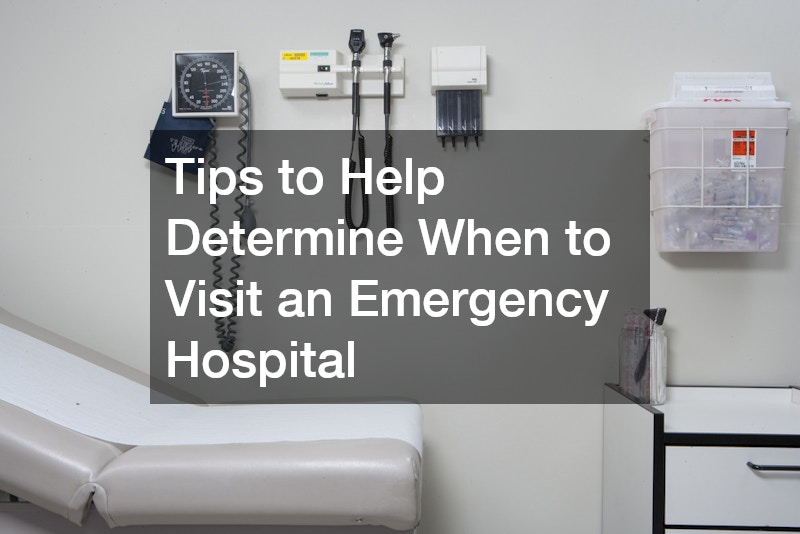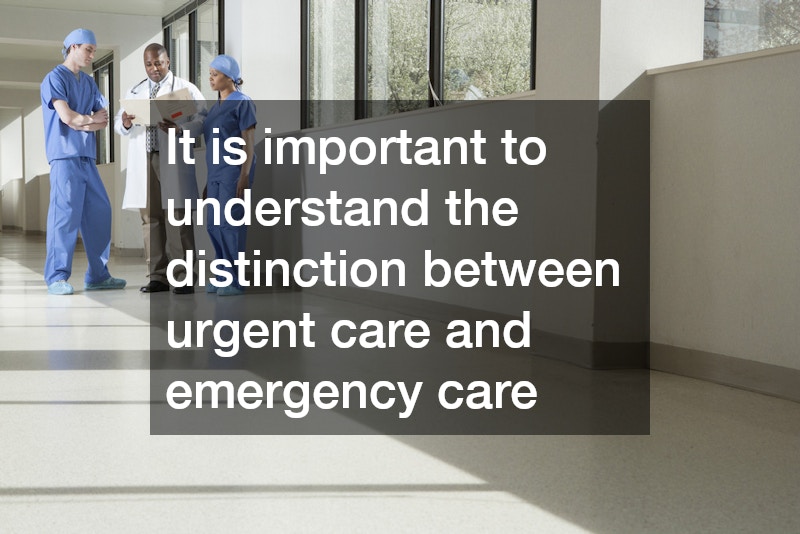
Learn valuable insights and tips to help you determine when it is crucial to visit an emergency hospital. Understanding when to seek immediate medical attention can be a life-saving decision. In emergencies, every second counts, and recognizing the correct symptoms is essential.
This guide aims to help you navigate the sometimes-confusing distinction between urgent situations and those that require immediate hospital care.
Recognizing Symptoms That Require Immediate Medical Attention
Some symptoms are clear indicators that you need to seek emergency medical attention. Severe pain, particularly in areas such as the chest or abdomen, can signify serious health issues requiring prompt evaluation. You should also consider difficulty breathing, which can point to respiratory conditions, heart issues, or allergic reactions. Moreover, sudden confusion or an altered mental state may indicate neurological problems such as a stroke, meriting immediate action.
Another alarming symptom that necessitates a trip to an emergency room is uncontrolled bleeding. Situations like this can quickly become life-threatening without professional intervention. If you notice deep cuts or injuries that are not healing properly, you should not wait before seeking medical help. Recognizing these key symptoms early on can lead to more favorable health outcomes.
Finally, if someone is experiencing symptoms of a stroke, such as sudden numbness on one side of the body, difficulty speaking, or a severe headache, time is critically important. The acronym F.A.S.T. (Face, Arms, Speech, Time) is a useful reminder for recognizing stroke signs. Understanding these critical symptoms will enable you to take immediate action, ensuring the best possible care for yourself or loved ones.
Differentiating Between Urgent Care and Emergency Care
It is important to understand the distinction between urgent care and emergency care to make informed decisions. Urgent care centers are typically equipped to handle minor injuries and illnesses, such as sprains, minor fractures, or infections. These facilities often have shorter wait times and lower costs than emergency rooms, making them appealing for non-life-threatening situations. However, they are not equipped to deal with severe health crises.
On the other hand, emergency care is necessary for life-threatening conditions. This includes heart attacks, severe trauma, and major strokes. Emergency hospitals have advanced medical technologies to diagnose and treat complex conditions rapidly. Knowing where to go for your specific situation can save both time and resources, ensuring you receive the appropriate level of care.
In cases of uncertain severity, it is often safer to visit an emergency room. This is especially true when symptoms indicate a potential risk to life or long-term health. As a general rule, if there is any doubt about the seriousness of a condition, lean toward seeking emergency medical attention to avoid potential complications.
Waiting for Emergency Services
When you or a loved one requires emergency services, the waiting period can be anxiety-inducing. Nevertheless, there are practical steps you can take to manage the situation more effectively. For instance, performing basic first aid can stabilize the individual in distress until help arrives. Knowing how to control bleeding, perform CPR, or administer the Heimlich maneuver is invaluable in emergencies.
Additionally, it is important to remain calm during this crucial waiting period. Techniques such as deep breathing or mindfulness can help alleviate anxiety. Staying composed allows you to think more clearly and respond to the situation at hand effectively. This level of preparedness can dramatically improve outcomes for those involved.
Remember to provide emergency responders with detailed information upon arrival. Be ready to share the symptoms, any known medical history, and any treatments already attempted. This can significantly enhance the efficiency and accuracy of the care provided once emergency services arrive.
Understanding Common Misconceptions About Emergency Room Visits
Various misconceptions surrounding emergency rooms may prevent people from seeking timely medical care. One common fear revolves around long wait times. While it’s true that emergency rooms often experience busy periods, they prioritize treatment based on the severity of cases. Consequently, patients with life-threatening issues will always be seen first, regardless of arrival time.
Another misconception is the cost associated with emergency room visits. Many individuals hesitate to seek help out of concern for expenses. However, delaying treatment due to financial fears can lead to more severe health complications and ultimately higher costs. Understanding the potential financial assistance options available may alleviate some of these concerns.
Lastly, some may fear that they will be judged for visiting an emergency room for conditions that may not appear serious. It’s crucial to understand that healthcare professionals would rather you err on the side of caution. Seeking prompt medical attention can save lives, and no symptom should be dismissed as unworthy of medical evaluation.
Knowing when to visit an emergency hospital is essential for ensuring prompt and effective medical care. By understanding the key symptoms, differentiating care options, and being prepared for emergencies, you can make informed decisions that could save lives. Empowering yourself with the right knowledge can also help alleviate the fears associated with emergency room visits. Ultimately, prioritizing immediate medical attention during critical moments can lead to better health outcomes for you and your family.


